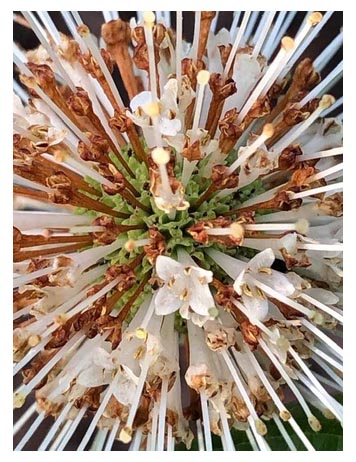
Although the bumblebee is likely the most well-known pollinator, pollinators come in a variety of shapes, species, and sizes.
“Many entomologists believe the tiny sweat bee nectaring on your flowering weed is just as important to a healthy ecosystem as the more well-known bumble bee and honey bee,” said Kelly Allsup, University of Illinois horticulture educator serving Livingston, McLean, and Woodford Counties in Illinois
Gardeners and homeowners can make a space more attractive to the small pollinators of Illinois by planting miniature flowers. These little bees, about the size of an ant, love pollinating miniature flowers in an urban environment where there is usually more floral diversity than in rural areas.
Small sweat bees, Lasioglossum, are dark brown, gray, black, or metallic, with hairs on their legs and abdomen giving them a fuzzy appearance. These pollinating bees have nests in bare ground that has loose soil. They make nests individually, but there may be multiple nests in one area.
“Small sweat bees are especially attracted to a much-beloved Illinois native shrub, button bush, or Cephalanthus occidentalis,” said Allsup.
Button bush boasts minuscule tube-shaped florets on a globular white seed head in the middle of summer, followed by an ornamental red seed head. This large shrub grows to about six feet to six feet and can form thickets in wet environments.
Yellow-faced or masked bees, Hylaeus, are dark bees that look like wasps with their yellow or white face markings. Lacking the hair of typical pollinating bees, these tiny bees ingest pollen and nectar, then regurgitate the mixture in nesting cells to feed larvae when they hatch.
This pollinator emerges in the late Spring when the bold flowers of golden alexanders, Zizia aurea, begin to bloom and remains active until the compound flowers of goldenrod, Solidago spp, start to fade. Yellow-faced bees can be seen pollinating the miniature white and purple flowers of common mountain mint, Pycnanthemum virginianum. These small flowers are arranged in clusters that bloom in late Summer.
Small carpenter bees, Ceratina, which are black and metallic blue, excavate the center of small stems in the garden. They have fine pollen-collecting hairs on their legs and carry pollen and nectar back to the nest within the stem.
Small carpenter bees are attracted to small flowers of Spring-blooming pussy willow, Salix spp, and summer-blooming yarrow, Achillea millefolium. Yarrow flowers cannot pollinate themselves and rely on the service of small bees.
“When Spring comes, instead of cutting your garden back to the ground, consider removing only the top of the stems to encourage opportunistic bees like small carpenter bees to make nesting cells to overwinter in,” said Allsup.
For more information on how to support pollinators, contact a local Extension horticulture expert at go.illinois.edu/ExtensionOffice.
— Kelly Allsup, Horticulture Educator, University of Illinois Extension

